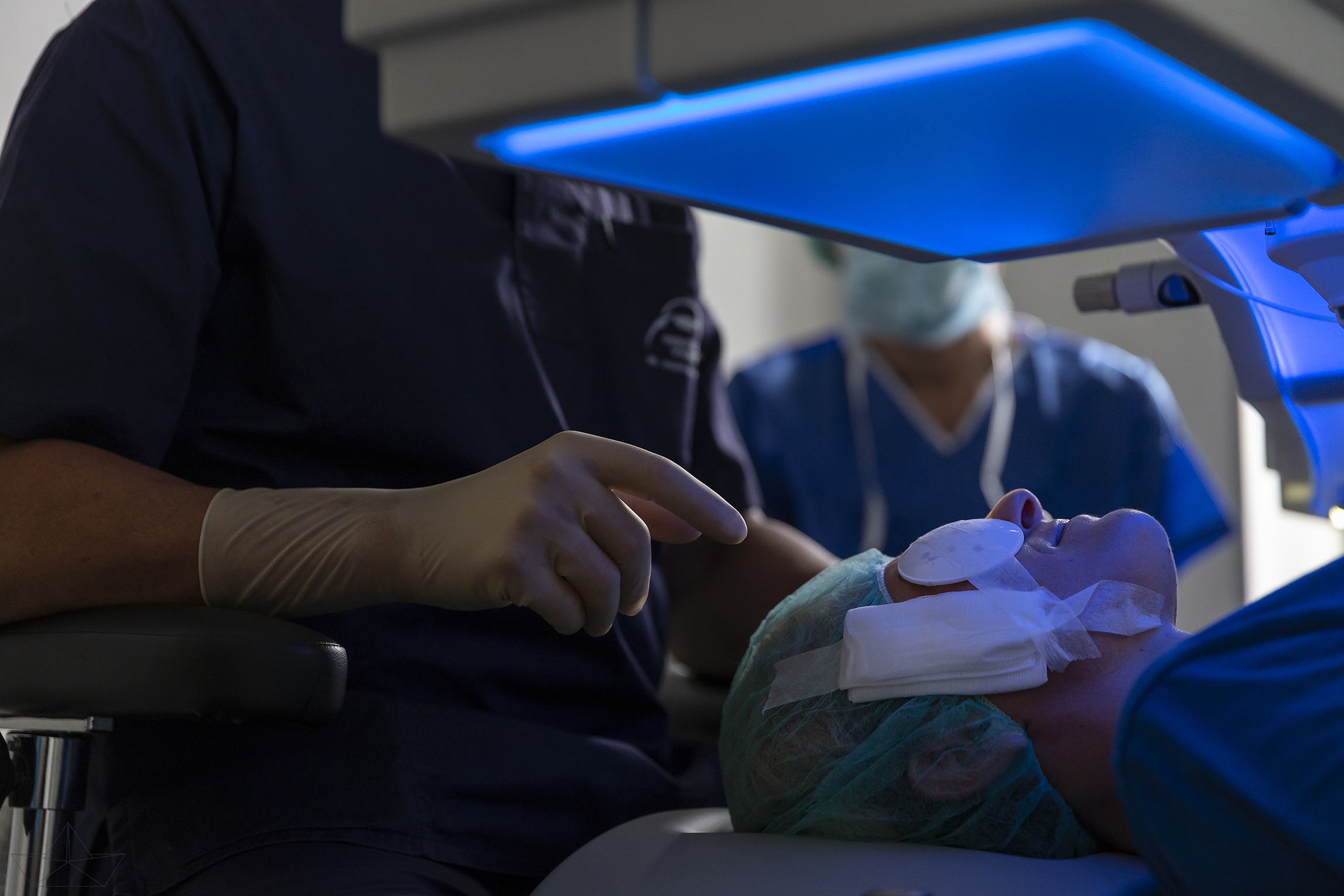
PRK
A safe, reliable and internationally recognized solution to vision correction. PRK is a well-established laser eye surgery procedure that to this day is the best option for those patients who do not qualify for other laser treatments.
PRK (Photorefractive Keratectomy) has been an effective technique for over 30 years now and was the very first laser technology to be FDA-approved in America. Nowadays it is still a great option for patients who are not good candidates for more advanced laser technologies (ReLEx SMILE, Femto-LASIK).
PRK is an efficient technique used to reshape the cornea through an Excimer Laser and correct vision problems. First, the eye surgeon removes the thin outer layer of the cornea (epithelium) and then an excimer laser is used to reshape the curvature of the cornea.
PRK is a high-precision technique that can be performed multiple times with good results.
XTRA: The Advantage in Refractive Surgery
The new XTRA procedure allows PRK to be safely performed on patients with borderline corneal features, such as thin corneas or corneal irregularities. It also offers a solution for cases where high ablation levels are required, leaving residual corneal thickness within the limits specified by treatment nomograms.
The purpose of this parasurgical therapy, also known as ‘corneal photodynamic treatment’, is to enhance the connections between corneal fibers and increase their strength. This reduces the risk of corneal weakening over time and improves long-term refractive stability.
The XTRA procedure involves two main steps:
during the first phase, the cornea is saturated with Riboflavin eye drops (Vitamin B2) for approximately 10 minutes per eye
the second phase involves exposing the corneal tissue to low-dose ultraviolet A (UVA) light for another 10 minutes. The combined action of Vitamin B2 and UVA rays increases the molecular cross-links that strengthen the innermost layers of the cornea, making it stiffer and less susceptible to degradation
The PRK technique
PRK is recommended for mild myopia, astigmatism and hyperopia, in particular for patients with thin cornea or suffering from specific corneal anomalies.
Dr. Angelo Appiotti, with over 30 years of experience, uses state-of-the-art techniques in the laser and surgical treatment of vision problems in patients and professional athletes, and is an authority in the field of refractive surgery in Europe.
With more than 10,000 eyes treated, he is one of the most renowned surgeons specialising in PRK.
The steps of PRK technique
Anaesthetic eye drops are applied to disinfect the surface of the eye before positioning the patient under the excimer laser
The epithelium (outer layer of the cornea) is removed with a tiny brush
The excimer laser reshapes the curvature of the cornea with varying intensity according to the refractive error
At the end of the surgery, antibiotic-cortisonic drops are put in
A therapeutic contact lens is placed on the reshaped cornea to protect the eye while new epithelial cells grow on the corneal surface
The Best Candidate
General good health and realistic expectations are necessary requirements to undergo PRK laser eye surgery.
- people over 18
- Stable vision prescription for at least one year, up to 10.00 dioptres of myopia depending on corneal thickness, up to 2-3 dioptres of myopic and hyperopic astigmatism and up to 2 dioptres of hyperopia
- No moderate-serious dry eye symptoms, eye irregularities, cataracts, allergies, degenerative and autoimmune diseases
- no eye (dry eye, glaucoma, keratoconus) and systemic diseases
The Benefits of PRK
- Easy and fast for the surgeon
- Less invasive for the patient
Visual recovery
The epithelium grows back and covers the corneal abrasion in 3/4 days, during which the patient has to wear a specific soft contact lens as bandage to help the eye recover. Visual recovery takes two or three days, at the end of which the protective contact lenses can be removed.
Cornea regeneration is quite painful and annoying and may take months after surgery, but this healing process is a sign that the surgery has been successful. The final re-epithelialization mainly depends on the personal scarring and biological response of the patient, who must be monitored on a regular basis by the surgeon who performed the surgery.
During the recovery period, the patient might experience sensitivity to light and feel like there is a foreign body in his eye: these minor side effects will disappear with time.
PRK should be performed on both eyes at the same time to reduce pain and recovery time.
Potential risks and complications of PRK
PRK boasts an excellent success rate, since there is little chance of complications (less than 5%). Like any other kind of laser surgery, it can have temporary or minor permanent side effects, such as keratoconjunctivitis sicca, erosion or photophobia, that usually go away on their own within 6 months after surgery. Though less common now, thanks to new laser technologies, another complication that may arise between 8 and 12 months after surgery is corneal haze. It can be treated with steroid eye-drops or, when necessary, further laser treatment (PTK procedure).
Make an appointment today
Dr. Appiotti performs laser eye surgery in state-of-the-art eye clinics in Milan or Verona. To make an appointment and determine whether you are a good candidate for the laser treatment available for your vision problem, please contact us by email or phone
